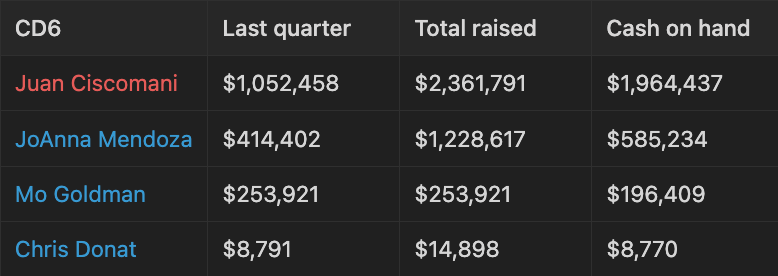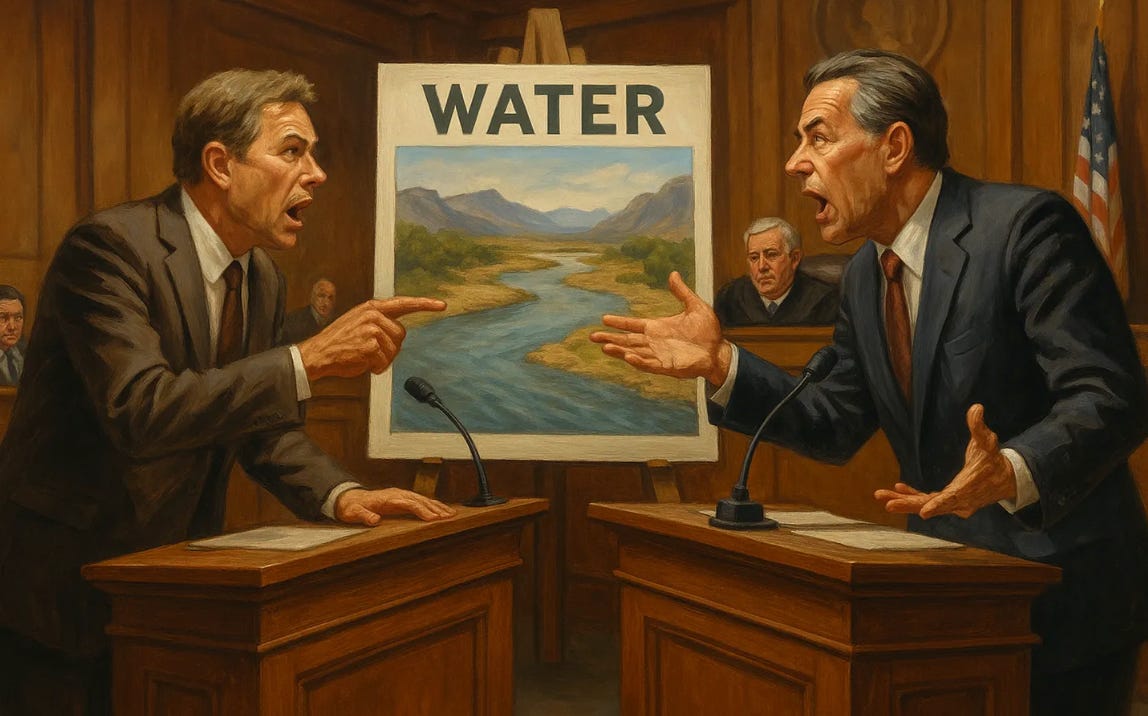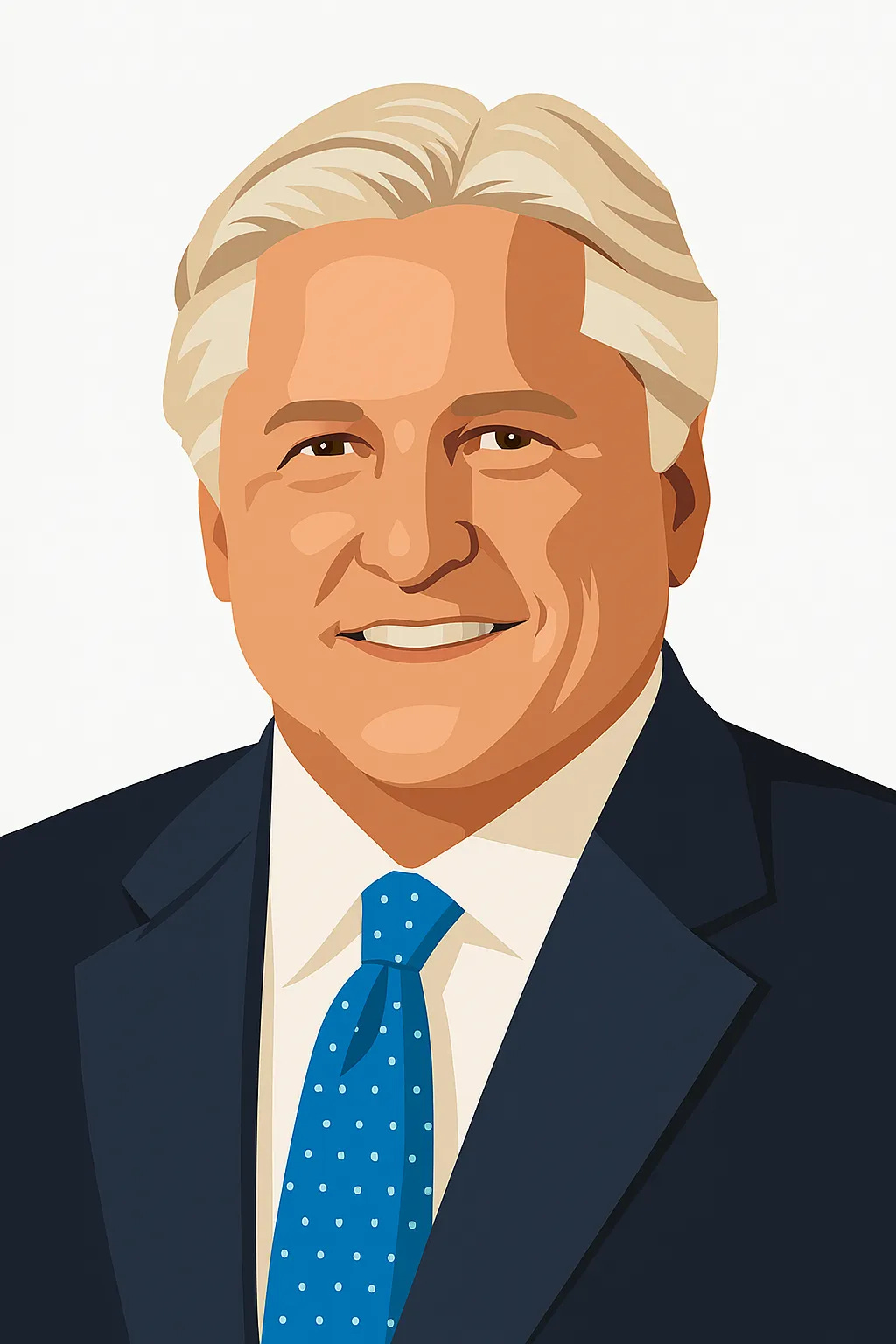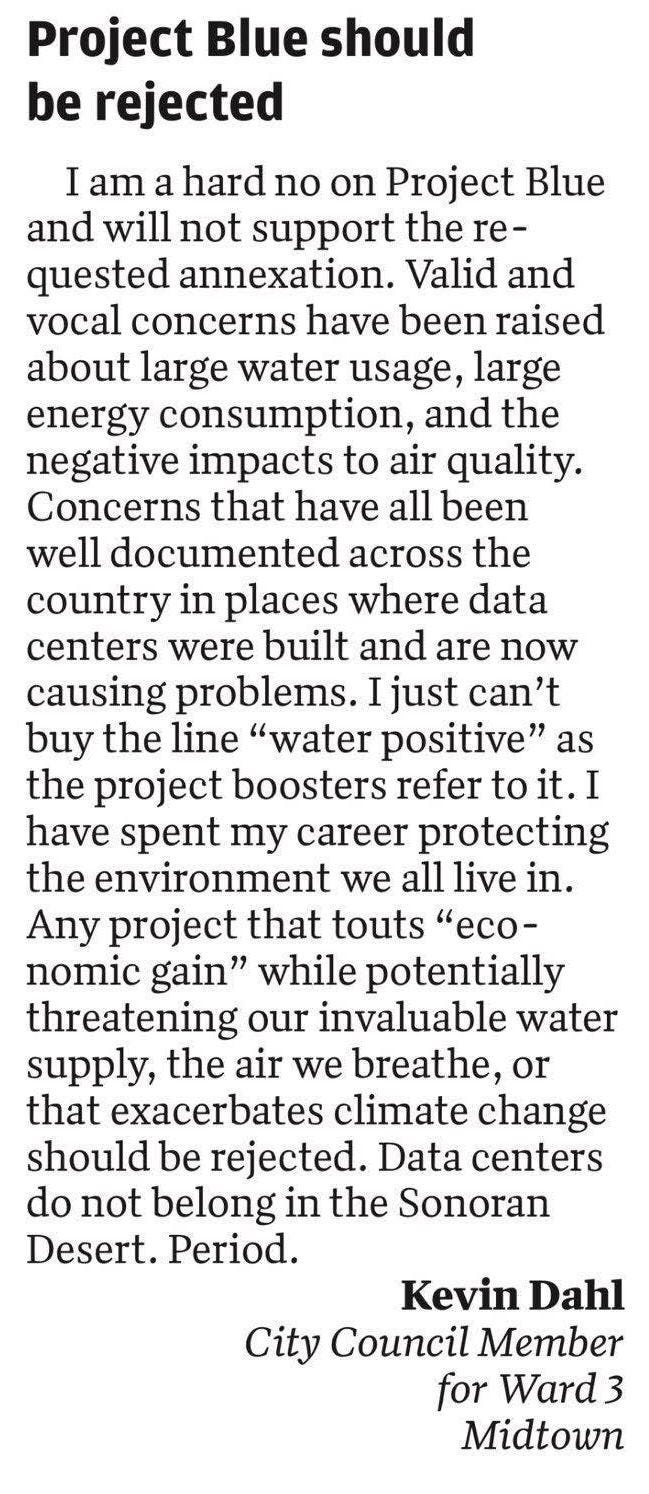The $4 million seat
Election price tag keeps growing … He didn’t last long … One firm “no” for Project Blue.
Nine days ago, we told you that Democrats, Republicans, and independent expenditure groups had raised — and mostly spent — $3.4 million on the Congressional District 7 special election.
Now, with a new batch of FEC data covering five more days, that total has climbed to over $3.9 million.
Three Democrats in the race — Daniel Hernandez, Adelita Grijalva, and Deja Foxx — reported an additional $200,000 in combined campaign contributions. Independent expenditure (IE) groups added an estimated $300,000 to the mix.
Turns out, the final stretch of a campaign can be pretty lucrative.
Together, the three Democrats and their allied IE groups were pulling in about $100,000 a day during the last days of June.

Our art intern ChatGPT is great at dumb art, but terrible at forgery. Our apologies to Benjamin Franklin.So how much have they raised since then?
We don’t know! And we won’t for a while.
Campaign finance reporting is built for consistency (most campaigns must file at least quarterly), but because this is a special election, the final two weeks of fundraising won’t be reported anytime soon. Some candidates might opt to file a termination report, but other candidates aren’t required to file again until right before the September general election.
Whether all that money actually decided the race is up to you.
Hernandez led the field in direct fundraising, crossing the million-dollar mark by June 30. But Grijalva, between her own campaign and outside support, easily topped $1.3 million in total spending. Foxx wasn’t far behind, with her campaign and allied groups bringing in close to $900,000.
Looking at the grand total spending in the race — political groups spent around $4 million to convince 45,000 people to vote for one candidate or another.
That’s roughly $100 in advertising per voter.
But that spending — and return on investment — is not evenly distributed.
One metric of a campaign’s effectiveness is looking at how much they spent per vote. Here’s how that math maths out:1
Hernandez spent $132.53 for each of his 7,747 votes.
Foxx spent $58.56 for each of her 11,463 votes.
Grijalva spent $27.18 for each of her 33,528 votes.
There are some wrinkles in the data.
One example: IE group Tucson Families Fed Up spent more than $220,000 opposing Grijalva. Some might count that as support for Foxx, since the group endorsed her in at least one mailer. But the FEC has its own, sometimes confusing, rules for categorizing spending in congressional races, so we didn’t attempt to calculate their vote-for-dollar rate or work it into the candidate calculations.
And the spending isn’t over yet.
With the CD7 general election still ahead in September, all candidates have one more report due, covering the final two weeks of July.
Congressional District 6: The $2.75 Million Seat
In neighboring Congressional District 6, the next election is still another 15 months out.
But don’t tell that to Rep. Juan Ciscomani or the growing list of Democrats already raising money for 2026.
Ciscomani, a Republican serving his second term in Congress, raised $610,850 in the past three months, got another $428,967 from authorized committees and ended June with $1.96 million in cash on hand.
His latest filing — covering April through June — includes $264,800 in PAC contributions. That haul includes donations from other congressional campaigns, leadership PACs, ideological PACs, and corporate PACs like Walmart and Airbus.
Democratic challenger Mo Goldman, an immigration attorney, raised $253,921 since entering the race in April — all from individual donors. No PAC money. No personal loans.
JoAnna Mendoza, a retired Marine, raised $414,402 in the same period, including $45,000 from PACs. But her campaign reported a high burn rate, spending $572,738 during the quarter — mostly on payroll, advertising, and travel.
Engineer Chris Donat reported raising just $8,791 during the same period.
Other declared candidates — Samantha Severson, Johnathan Buma, and Aiden Swallow — haven’t filed reports, suggesting they haven’t crossed the $5,000 threshold that triggers mandatory FEC disclosures.
After months of infighting, the Arizona Democratic Party voted Wednesday night to remove Chairman Robert Branscomb.
Tucson’s Kim Khoury will serve as acting chair until a permanent replacement is selected in September.
The virtual meeting dragged on for more than four hours and was marked by chaos, procedural disputes, and deep mistrust between Branscomb’s supporters and those pushing to show him the door.
Branscomb won the chairmanship in a contentious January election, narrowly defeating former chair Yolanda Bejarano.
Tensions boiled over this spring when Branscomb circulated a letter accusing Arizona’s two U.S. senators and other top Democrats of bullying and threatening him in an effort to undermine his leadership.
That letter triggered a very public feud. In response, Sens. Mark Kelly and Ruben Gallego, Gov. Katie Hobbs, Secretary of State Adrian Fontes, and Attorney General Kris Mayes issued a joint letter accusing Branscomb of spreading falsehoods.
The Water Agenda
It has been more than two years since Gov. Katie Hobbs announced that her predecessor had been playing fast and loose with the law requiring developers prove they have a 100-year assured water supply.
Since then, some things have changed in the Phoenix and Pinal County Active Management Areas, and some things haven’t changed.
This wasn’t the first time housing developers had sparred with Arizona officials over water, of course.
But it sparked legal battles that continue today.
In this week’s edition of the Water Agenda, we dig into the lawsuits, the legislation this battle is inspiring and the potential for Hobbs to take even more executive actions to bypass the Legislature.
Subscribe to the Water Agenda for deep dives into the legal battles and water wars that will shape our state.
The Education Agenda
The Arizona Board of Regents will say goodbye to 12-year member Fred DuVal at the end of the year.
In this week’s Education Agenda, we spoke with DuVal about his time as a regent and the current strain from Trump’s massive cuts to federal grant funding for Arizona universities.
Meanwhile, the Trump administration remembered Ivy League schools aren’t the only universities with DEI programs to stop and the University of Virginia was victim one.
UVA president James E. Ryan was told by the university board he had to remove diversity programs following a DOJ pressure campaign. Ryan had been changing titles, instead of rooting out DEI — a play similar to what the University of Arizona has done with cultural resource centers.
For more on the education scene — from university news to high school happenings — subscribe to the Education Agenda.
The A.I. Agenda
What, exactly, are data centers?
And why do we need so many of them?
Arizona is quickly becoming a hotbed for the potentially lucrative projects, but they’re straining our electric grid and water supply — and cities are starting to take notice.
Not to mention, these projects aren't always owned by homegrown giants like IBM anymore — foreign capital is reshaping Arizona’s economy, and environment.
In this week’s edition of the A.I. Agenda, we break down the debate about these massive projects sucking up water and using as much electricity as thousands of households — and whether they’re worth it.
Subscribe to the A.I. Agenda to increase your compute power for Arizona’s biggest power struggle.
Tucson City Councilman Kevin Dahl is making one thing very clear: Project Blue isn’t getting past him without a fight.
He said “no” in his Ward 3 newsletter recently. Then he said “no” again in a letter to the Arizona Daily Star this week, just in case anyone missed it the first time.
At this rate, we’re half-expecting him to hand out T-shirts at the next Council meeting when he says “no” for a third time.
We also hope the third time he says it — a la BeetleJuice — it conjures a giant sign with the word “No!” on it.
Say what you will about the man, but when Dahl opposes something, he doesn’t mumble. He puts in print, tells the media about it, and isn’t shy in bringing it up in public.
Since we're missing the last two weeks of FEC data, we calculated cost-per-vote using total money raised through June 30. We're assuming most campaigns spent down their accounts before election day — so the actual per-vote cost is likely a bit higher.














I agree with Dahl! Since last November 3rd, I have had a little over 3 inches of rain at my home and that includes 2 inches of rain this week! The explorer Zebulen Pike (Pike’s Peak in Colorado is named after him) was charged by Congress in the early 1800’s to explore the West and his report to Congress stated that the Great American desert was west of present day Salina, Kansas!!! Until we tap a straw into the Pacific Ocean Pike is correct over two hundred years later! Finally, is there a decent Republican in District Six to primary our disgusting Pedophile Protector, Juan “The Liar” Ciscomani???